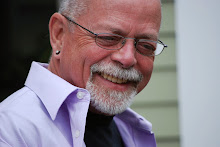Monday, January 31, 2011
A different kind of gay novel
Joseph Roche was active in voter registration drives in Mississippi during Freedom Summer, in 1964. He was from Los Angeles, and in 1961 he volunteered for Freedom Rides after he saw the first one on TV and saw young people beaten by racist mobs. His mother had taught him about Marcus Garvey and black nationalism, and Martin Luther King had taught him about non-violence. Later, he went to UCLA, fought in the Watts Riot in 1964, and then went to New York, where he got an acting job with the New Lafayette Theatre, a leader in the Black Arts Movement. Joseph had sex with men, and he didn’t find that the way he was living made him feel better about himself.
Joseph got a job downtown, in the West Village, as Caliban, in a repertory production of The Tempest, and then found himself, early in the morning on June 28, 1969, fighting the cops after they had raided the Stonewall Inn. This was where he met Bo Ravich.
Trying to explain to Bo why he had come downtown, Joseph said, "I was aware of wanting to be in a community of fags. A group of us, six or eight brothers and sisters, would be out going to clubs after some event, and I was aware that people were pairing off, but it didn't seem possible for me to pair off."
Joseph is a character in Adam in the Morning, and for a novelist the question raised by Joseph’s life is What kind of literature does this life make? A literature grounded in the political and racial history of the characters, which inevitably explores the point at which the personal becomes the political and vice versa.
"We don't know many black men."
"Oh, yeah. It makes us close." He kisses [Bo]. "And I have a lot of questions to ask you too, about being white." He smiles and kisses [Bo] again. "You don't seem like a devil."
Joseph got a job downtown, in the West Village, as Caliban, in a repertory production of The Tempest, and then found himself, early in the morning on June 28, 1969, fighting the cops after they had raided the Stonewall Inn. This was where he met Bo Ravich.
Trying to explain to Bo why he had come downtown, Joseph said, "I was aware of wanting to be in a community of fags. A group of us, six or eight brothers and sisters, would be out going to clubs after some event, and I was aware that people were pairing off, but it didn't seem possible for me to pair off."
Joseph is a character in Adam in the Morning, and for a novelist the question raised by Joseph’s life is What kind of literature does this life make? A literature grounded in the political and racial history of the characters, which inevitably explores the point at which the personal becomes the political and vice versa.
Bo talks about these matters with Joseph.
"We don't know many black men."
"No?"
"No. I'd like to know more. There've been other times in my life when I've had a lot more black friends than now."
"Well. Maybe I should seize this moment to tell you that I don't know many white gay men. Let's see how things work out. And if you guys are as cool as I think you are, there are some black dudes I could introduce you to."
'Is it OK for me to ask you these questions?"
